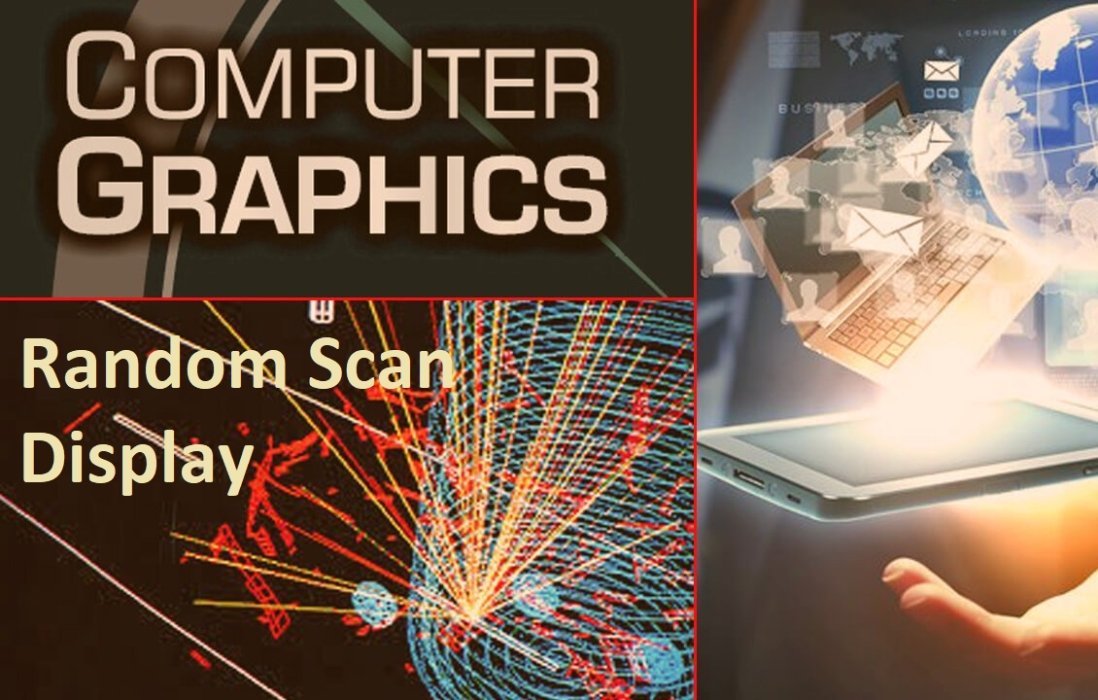Random Scan Display in Computer Graphics
The original CRT, developed in the late 50’s and early 60’s, created charts and pictures line by line on the tube surface in any (random) order or direction given, in a vectorial fashion. The electron beam was moved along the particular direction and for the particular length of the line as specified. For this reason the type of device was known as vector calligraphic or stroke.
For example if we want a line connecting point A with point B on the vector graphics. display, we simply drive the beam deflection circuitry, which will cause beam to go directly from points A to B.
If we want to move the beam from point A to point B without showing a line between points, we can blank the beam as we move it. Thus random scan display generates the image by drawing a set of random straight lines much in the same way one might move a pencil over a piece of paper to draw an image-drawing strokes from one point to another, one line at a time.
There are of course no bit planes containing mapped pixel values in vector system. Instead the display buffer memory stores a set of line drawing commands along with end point coordinates in a display list or display program created by a graphics package. The display processing unit (DPU) executes each command during every refresh cycle and feeds the vector generator with digital x, y and Ax, Ay values. The vector generator converts the digital signals into equivalent analog deflection voltages. This causes the electron beam to move to the start point or from the start point to the end point of a line or vector. Thus the beam sweep does not follow any fixed pattern, the direction is arbitrary as dictated by the display commands.
Diagram shows the typical random scan display architecture. It consists of display controller, central processing unit (CPU), display buffer memory and a CRT.

